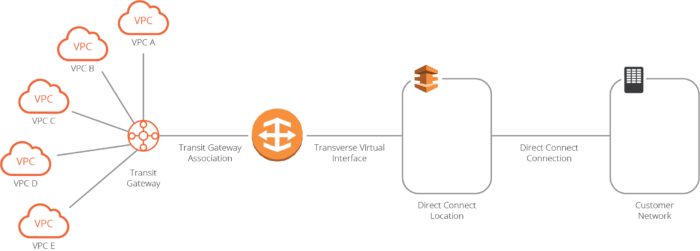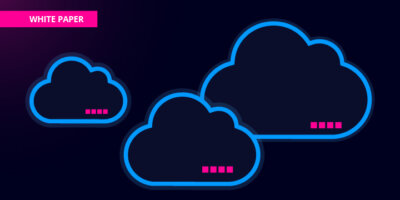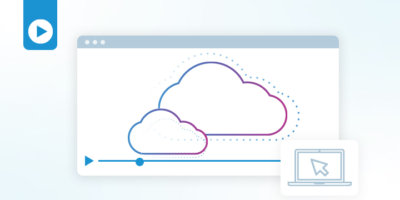Guest blog by Scott Raynovich, Founder & Chief Analyst of Futuriom.
Today, it seems as if the large majority of applications being consumed are either based in or connected to the cloud somewhere. But what about the network? Can it be in the cloud too? It’s happening faster than you think.
Although we still think of the network as a series of cables and boxes, the fact is that network functionality and services are increasingly being built and delivered by software in the cloud.
Zoom is a great example. When you connect to a Zoom meeting with colleagues or friends, are you concerned about what’s happening on the network? Not at all. That’s because Zoom has taken care of it all for you – you just ordered up a network service from the cloud.
Software & APIs are the Key
Over time, the physical infrastructure of networks will become less important to those who are consuming network services. That’s not to say that physical infrastructure isn’t needed or is not important – it just means that fewer people will have to touch it or even know about it.
This new generation of network-based services and applications is enabled by the cloud development model, which uses Application Programming Interfaces (APIs) to make it easier to build software to leverage underlying infrastructure.
Let’s look at an analogy of how this works. Think of your Web browser, accessing Wikipedia or any number of resources. Once the Web Browser was invented, we quickly developed access to the Library of the World.
The Library of the World is what technologists would call an abstraction. In the old world, if you wanted to find a specific magazine or written resource, you would have to go to a physical library. But all of the physical resources could be converted into digital bits – abstracted – and then made available with a standard Web-browser interface.
It’s interesting that one of the pioneers in Web browsing, the venture capitalist Marc Andreessen, came up with the now famous saying, “Software is eating the world.” That’s because as a developer of one of the first Web browsers, Mosaic, Andreessen understands the power of abstraction.
This model of abstraction and integration has triggered the explosion of innovation in the cloud, where nearly anything can be abstracted and turned into a more powerful service. Uber abstracted away the idea of finding physical taxis and made it virtual. AirBnB abstracted physical real estate into a virtual catalog.
To build abstracted, virtual cloud applications, developers take standard hardware with open interfaces, and then connect data and software using APIs. This has made software integration and development much more rapid.
Many of the most successful cloud-based communications applications, whether its Twitter or Twilio, are based on APIs. APIs democratize the access to the data and feature sets, enabling developers to more rapidly build new features and applications.
The Network is the Next Cloud
So how does the network become nimbler and cloud-like. The same way all the other cloud applications have evolved – the infrastructure will be abstracted out to APIs that can be accessed by myriad services and even other networks.
The process of using APIs to abstract networks and deliver innovation started in the cloud itself, when major public cloud providers needed networks that could be more nimble and automated – for example, they wanted networking resources to be controlled by applications that could order networks, rather than by humans. For example, a scaling application might be able to automatically order a new Ethernet connection to a nearby server. This was the origin of software-defined networking.
This software-driven networking innovation has come more slowly to service provider and traditional enterprise networks, but that’s due to the inertia of the installed base. It’s now happening at increased speed, because service providers and enterprises realize they need to be nimbler. After all – there are a lot of networks out there, and many of them aren’t going to go away any time soon. For example, software-defined automation has made its way to WiFi networks to help them manage themselves.
As new networks get built – think of thousands of 5G base stations and wireless nodes pumping out enormous amount of data with the need to instantly connect – they will require greater scale and rapid change. The only solution will be to automate them using software and more open models of APIs.
The arrival of technologies such as 5G, compute edge, and smart sensors will vastly increase the amount and diversity of data and devices that can be used to build new “smart” applications. For example, a municipality using connected cameras to adjust traffic based on sensor data. At the same time, these networks will need to connect to old networks too – the private data center that still has valuable data in it, or the copper telecom lines built decades ago that are still functional. It will all be controlled with software, connecting the old to the new.
This will be enabled with software, which can program and integrate a network of networks, just like our Web browser accesses the Library of the World. Imagine a future where a network designer – or even a non-engineer — simply hops onto a Web interface, looks for the closest networking resources – for example, a fiber connection, a cloud Point of Presence (PoP), a 5G node, or a WiFi hotspot — and then uses the software to connect to just about any cloud network or applications. Using public cloud resources, in fact, you have instant access to a global network.
That’s the network in the cloud. It’s arriving now.
Automating Cloud Complexity
As networks rise in complexity – for example, on any given day we are using a combination of public communications networks, public and private clouds, and enterprise networks – how can they be better automated? The key will be using APIs and modern cloud software techniques to connect any network, or any cloud.
The cloud ecosystem is driven by APIs and programmability – which is fundamental to the approach of the largest cloud or “webscale” services. A commonality among emerging technologies such as SDN, SD-WAN, and multi-cloud or hybrid clouds is that cloud-native architectures can be used to abstract information to a service gateway and use APIs to connect, automate, secure, and improve networking within and between multiple public clouds.
Many of the public cloud providers set up a gateway that exposes APIs at major cloud POPs in order to enable other networks to connect. The diagram below shows a Transit Gateway from Amazon that allows external customer networks to connect into Amazon cloud using Virtual Private Cloud (VPC).

In the future, enterprises and services providers will leverage these capabilities by using wide software orchestration, APIs, and network POPs to connect and extend services across many different networks – creating a network of networks – without any manual configuration or touching of hardware needed. It is even possible for applications to adjust the networks on demand to scale a service, for example, without involving humans in the process.
The Network as a Service (NaaS) of the future could be fully automated, and entirely driven by software. That is the magic of cloud-native APIs and interoperability.
Download the full Futuriom report,“The Future of Multi-Cloud Networking,” to learn more about this new wave of cloud networking and the technology drivers and challenges that go along with it.





